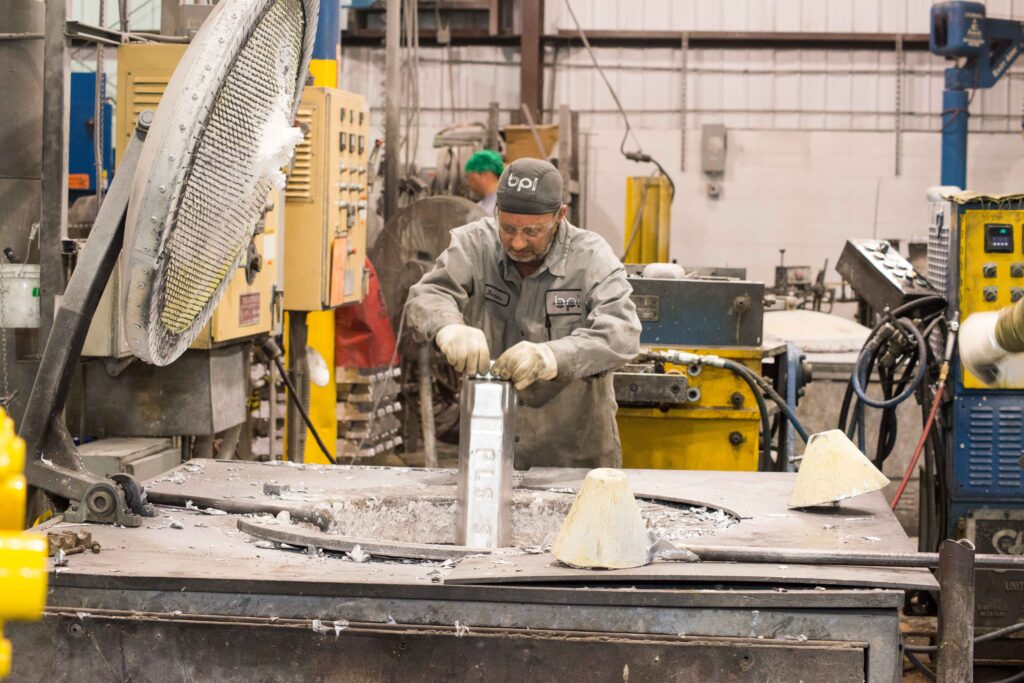We met with Dave Moore from The Foundry Way to tour his extensive aluminum testing lab and learn more about the casting inspection process. In The Foundry Way Learning Center, there are many tools to test aluminum castings, including
There are 4 common categories of defects in aluminum castings: porosity, metallurgical, mold, and core. Here is a brief overview so you can identify common casting defects causes and cures.
Porosity is another term for gas trapped inside your aluminum part. There are varying levels of porosity, ranging from large cavities to pin holes. Different porosity defects include:
Porosity can typically be identified visually, but sometimes requires testing methods such as Fluorescent Penetrant Inspection (FPI).
Porosity can be caused by moisture, solidification, or even your pouring method. For example, if you pour metal at a high velocity, you are more likely to trap air. Therefore, a solution would be to control your pouring method, perhaps by implementing an automated tilt pour. This video explains how pouring methods relate to porosity:
Metallurgical defects refer to issues associated with the aluminum alloy structure. Defects include:
As you may have guessed, these defects can often be detected in a metallurgical analysis. However, some defects are trickier to identify than others. Therefore, you may require further testing such as x-rays or penetrant testing.
Metallurgical defects are often caused by improper filling or lack of temperature control. A solution may be as simple as adjusting your heat controls so that you are not pouring too hot or too cold of metal.

These defects are typically caused by issues with your mold such as wear and tear or misalignment. Mold defects are often identified as visual imperfections on your castings. Common mold defects include:
Solutions typically relate to improving your mold design and strength.
This category of casting defects is caused by core flaws. They are also commonly detected visually with the naked eye or low power magnification.
To fix these imperfections, you may need to improve your core’s strength, permeability, or make-up.
These defects typically point back to your solidification process. They can almost always be detected visually.
A solution would be to revisit your solidification process, perhaps by performing a Finite Element Analysis (FEA)

The Foundry Way Learning Center offers interactive classes where you can test and trouble-shoot aluminum castings. Learn how to precisely identify and test each defect and implement defect-specific solutions.
We can help. The best way to avoid defects is to choose an experienced casting company who will produce quality castings from the start. Browse our gallery to see what quality aluminum castings look like.

Just visit thefoundryway.com/handbook-request/